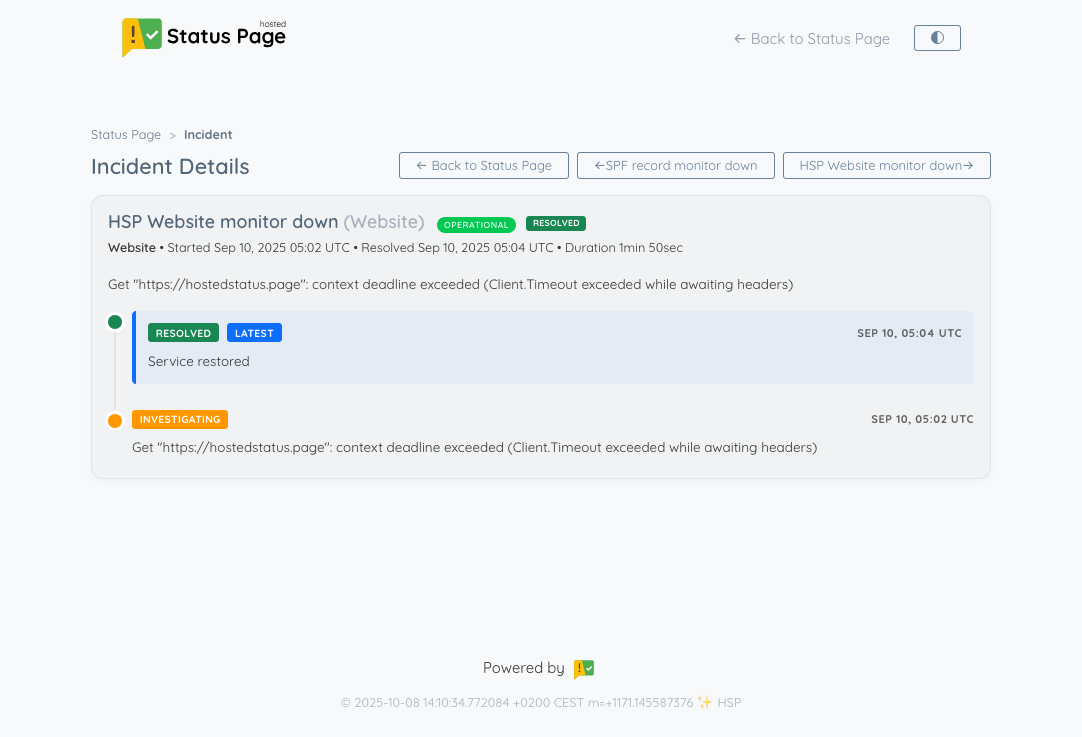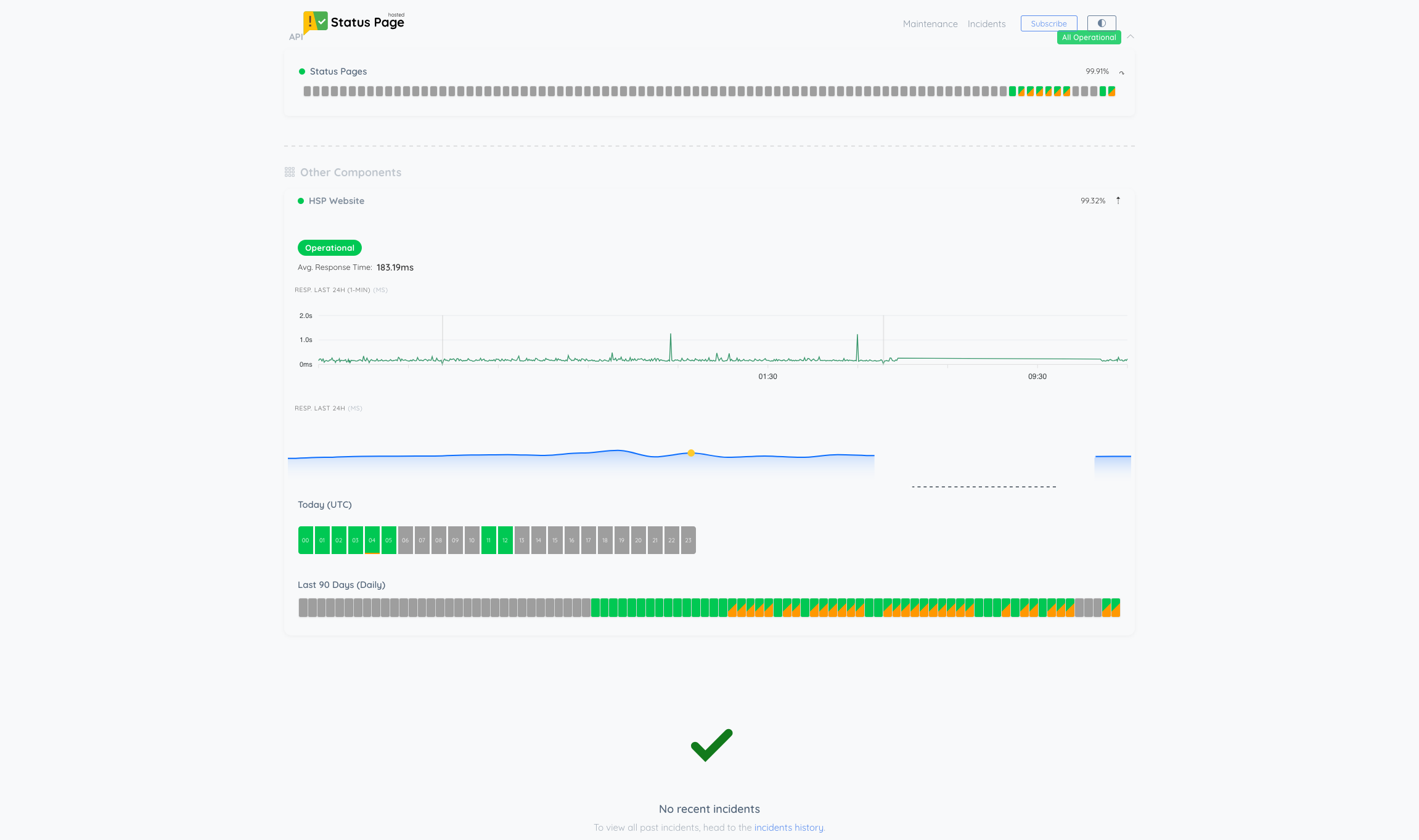Status Page – Communicate Downtime & Build User Trust
Create beautiful, reliable status pages with uptime monitoring and incident transparency to keep your users informed.
✨ The easiest way to share uptime, incidents, and transparency
What is a Status Page and Why Your Team Needs One
A status page is a dedicated web page that communicates the real-time operational status of your services to your users. It helps teams proactively share uptime information, incident updates, and maintenance schedules—building transparency and trust with customers while reducing support load.
Everything you need for transparency
Not just monitoring, but complete incident communication and trust-building tools.
Status Page Examples
See how status pages look in action with different designs and configurations.



Hosted vs Self-Hosted Status Page
See why hosted status pages are the smart choice for most teams.
| Feature | HostedStatus.page | Self-Hosted |
|---|---|---|
| Setup & Maintenance | ✔️ Fully managed | ❌ Manual setup required |
| Infrastructure Management | ✔️ No servers to manage | ❌ You manage servers |
| Reliability & Uptime | ✔️ High availability | ⚠️ Depends on your resources |
| Customization | ✔️ Easy branding | ⚠️ Requires coding |
| Cost | ✔️ Predictable pricing | ⚠️ Possible unexpected costs |
| Support & Updates | ✔️ Dedicated support | ❌ DIY support |
Supported OSS
A few of the open‑source projects we’re proud to support.
We’re curating a list of great open‑source projects using HSP.
Apply your projectWhy we back open source
Open source software underpins everything we build. This program helps maintainers communicate outages and maintenance with clarity and credibility — without adding toil.
Community first
Priority for projects with active contributors & users.
Real impact
Reliable comms → fewer issues & happier users.
What you get
- Unlimited subscribers
- Incident history & postmortems
- Embeddable trust badges & widgets
- Privacy‑friendly, no trackers
- API access & automation
Eligibility
- Public repository with active development
- OSI‑approved license (MIT, Apache‑2.0, GPL, etc.)
- Project website or README visible to users
- Non‑commercial usage on this plan
How to apply
- Create a free account and set up your status page.
- Submit the form with your repo, license, and project links.
- We review and upgrade you to the OSS Hero plan.
Eligible for the OSS Hero program?
Apply now to get a free status page for your open source project.
Why Choose HostedStatus.page Over Building Your Own?
Focus on your product, not infrastructure.
No infrastructure management
Fully hosted and maintained—focus on your product, not servers.
Rapid deployment
Pre-built templates and integrations get you up and running in minutes.
Reliable uptime monitoring
Powered by proven technology with 99% uptime guarantee.
Dedicated support
Continuous feature updates and expert support when you need it.
Ready to build trust with your users?
Start your free trial today and create a professional status page in minutes.
Start Your Free Trial Explore PricingWant to dive deeper? Learn more on our Blog